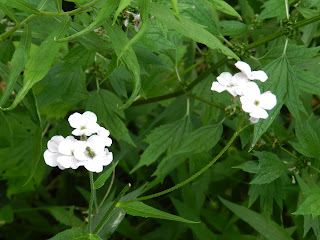Mary Hewitt
 1799-1888
1799-1888
God might
have bade the earth bring forth
Enough
for great and small,The oak-tree and the cedar-tree,
Without a flower at all.
We might have had enough, enough
For every want of ours,
For luxury, medicine, and toil,
And yet have had no flowers.
Then
wherefore, wherefore were they made,
All
dyed with rainbow light,All fashioned with supremest grace,
Upspringing day and night: --
Springing in valleys green and low,
And on the mountains high,
And in the silent wilderness
Where no man passes by?
From: The Gardener’s Book of Poems and
Poesies. Compiled by Cary O. Yager. ©1996 by Contemporary Books, Inc. Two
Prudential Plaza, Chicago, Illinois 60601-6790.






























